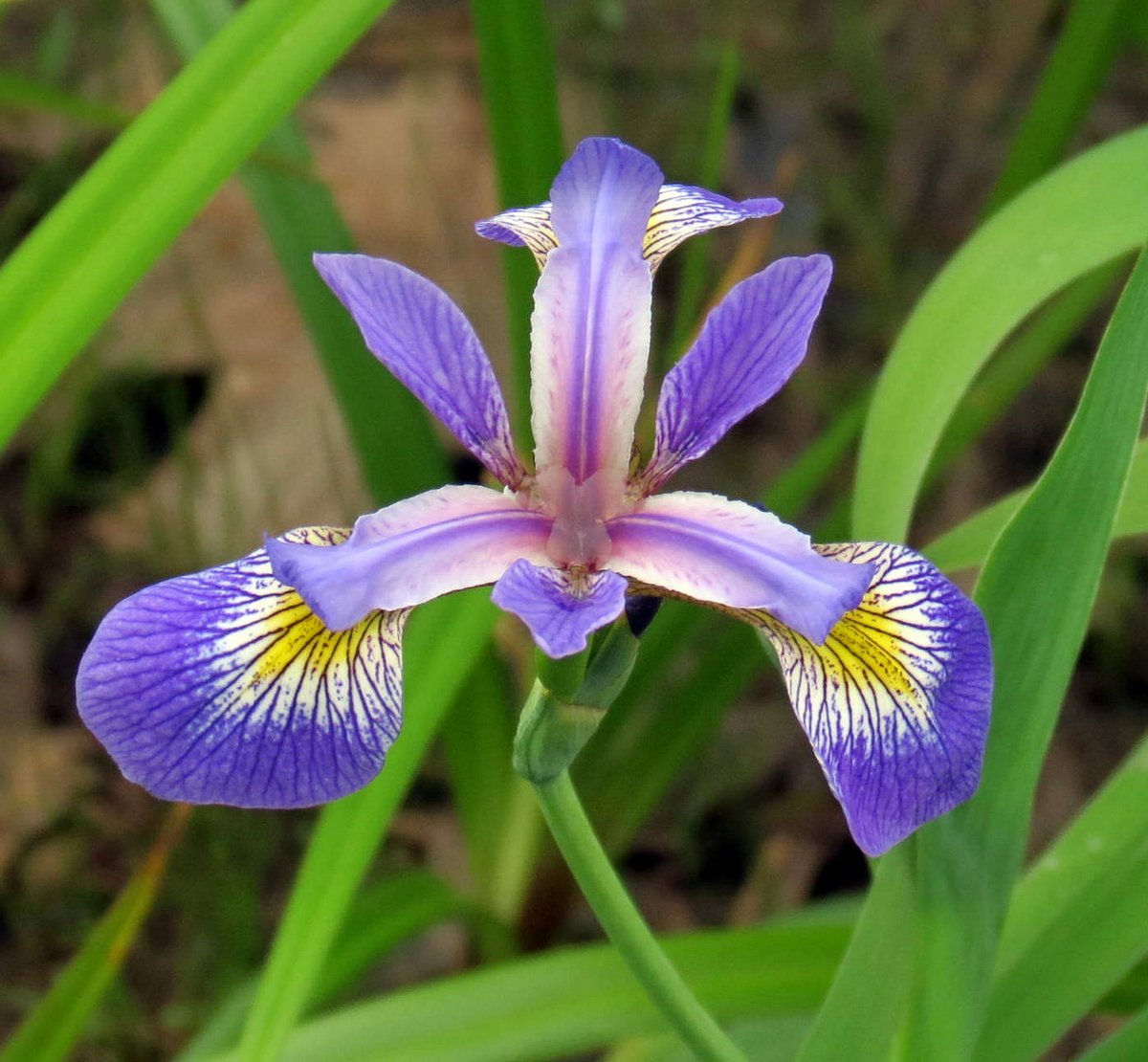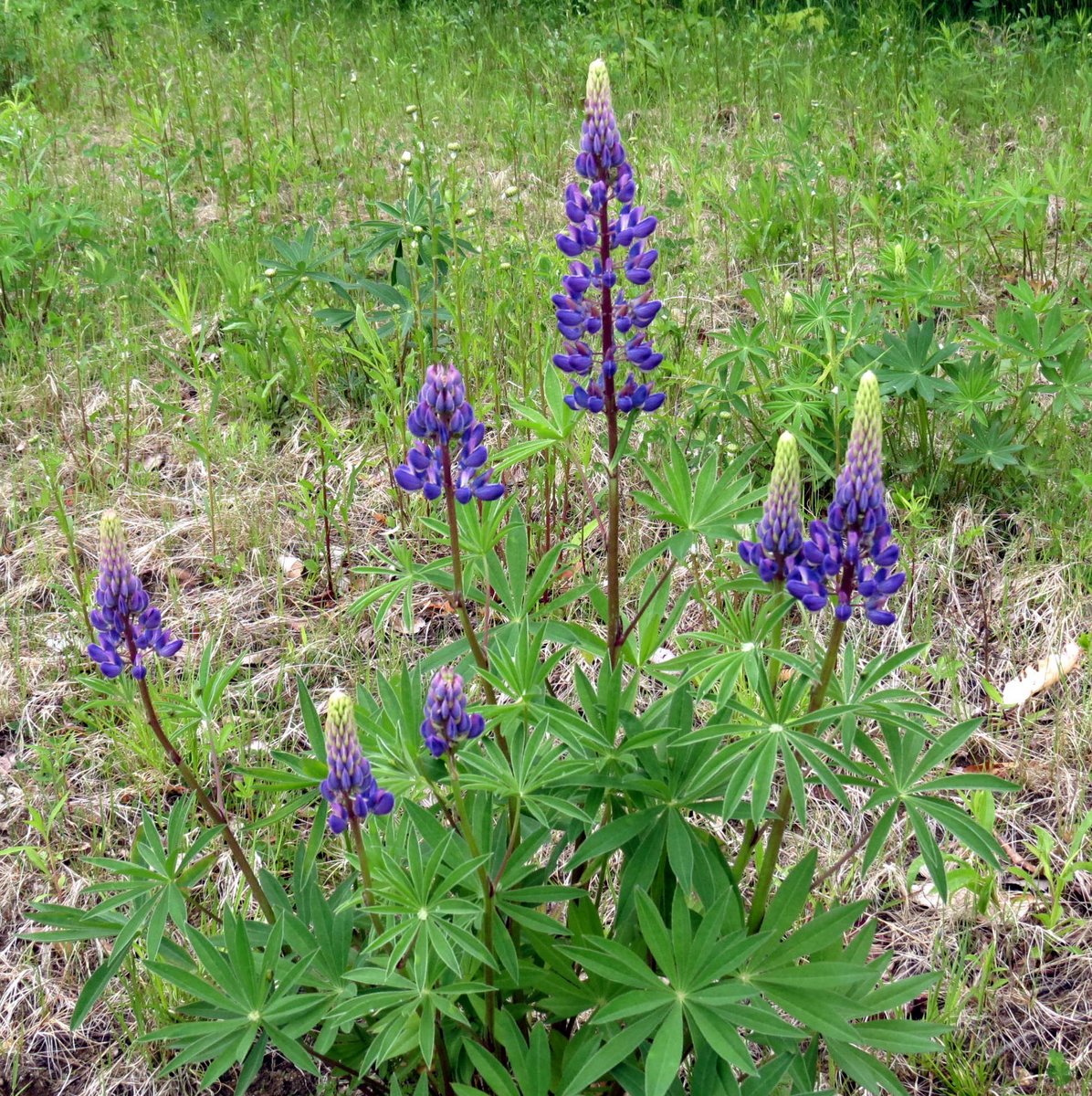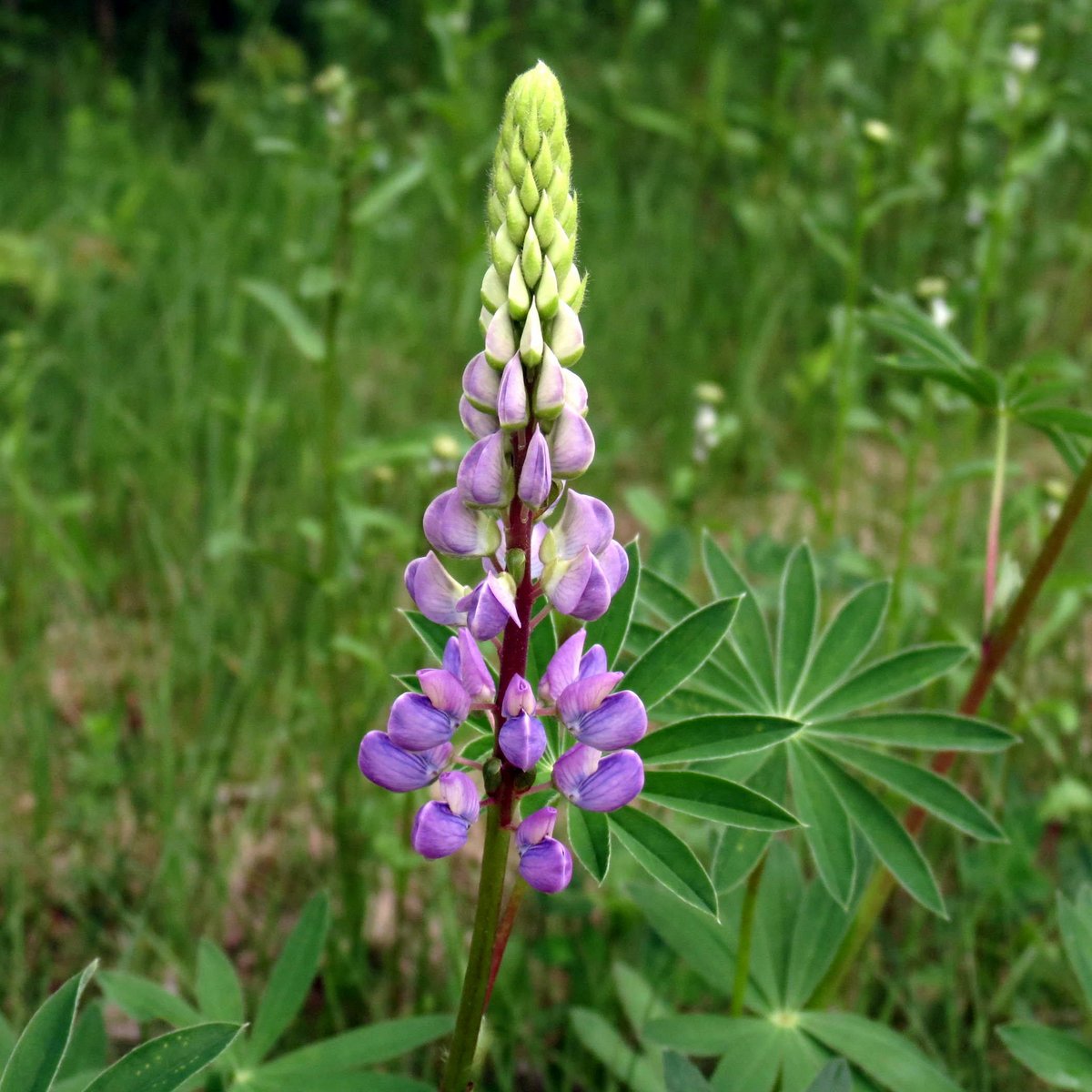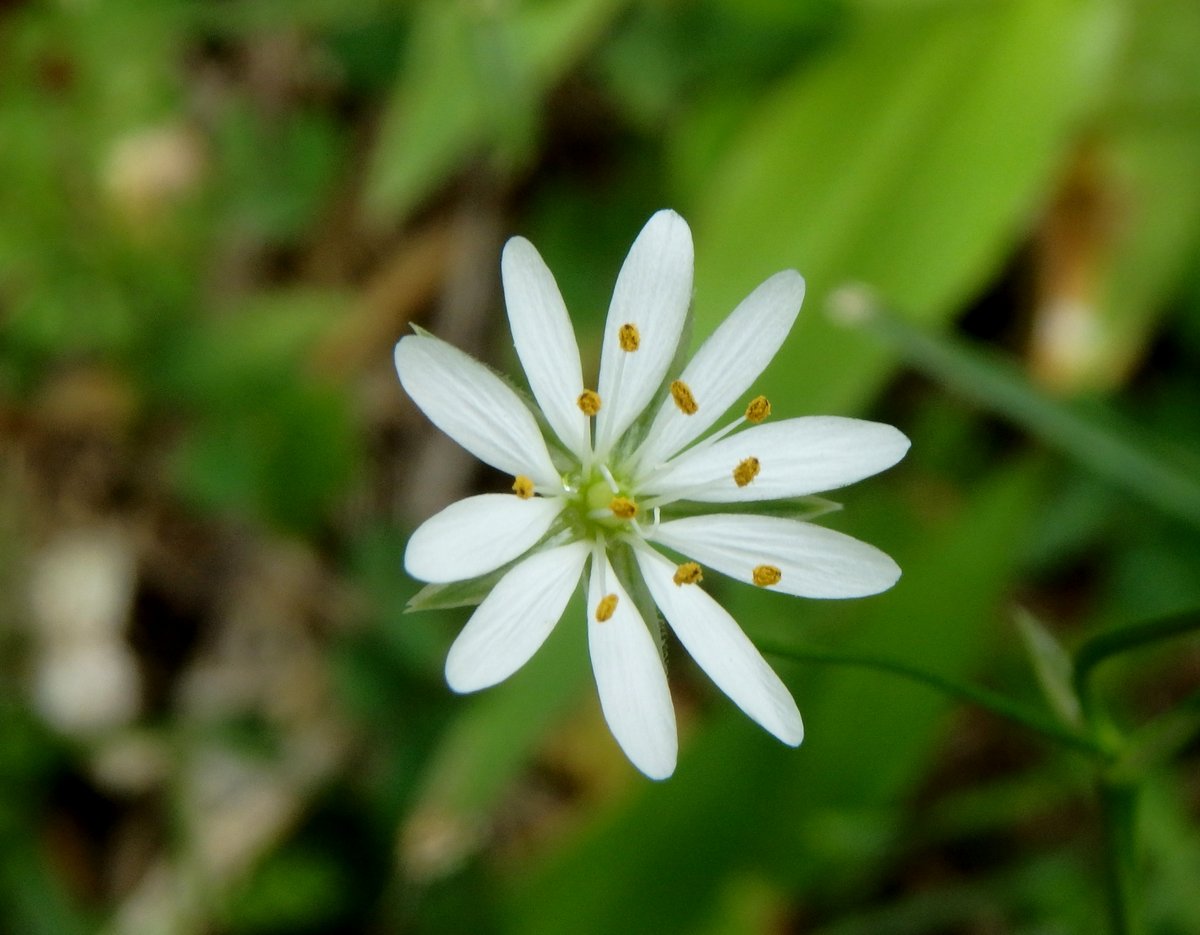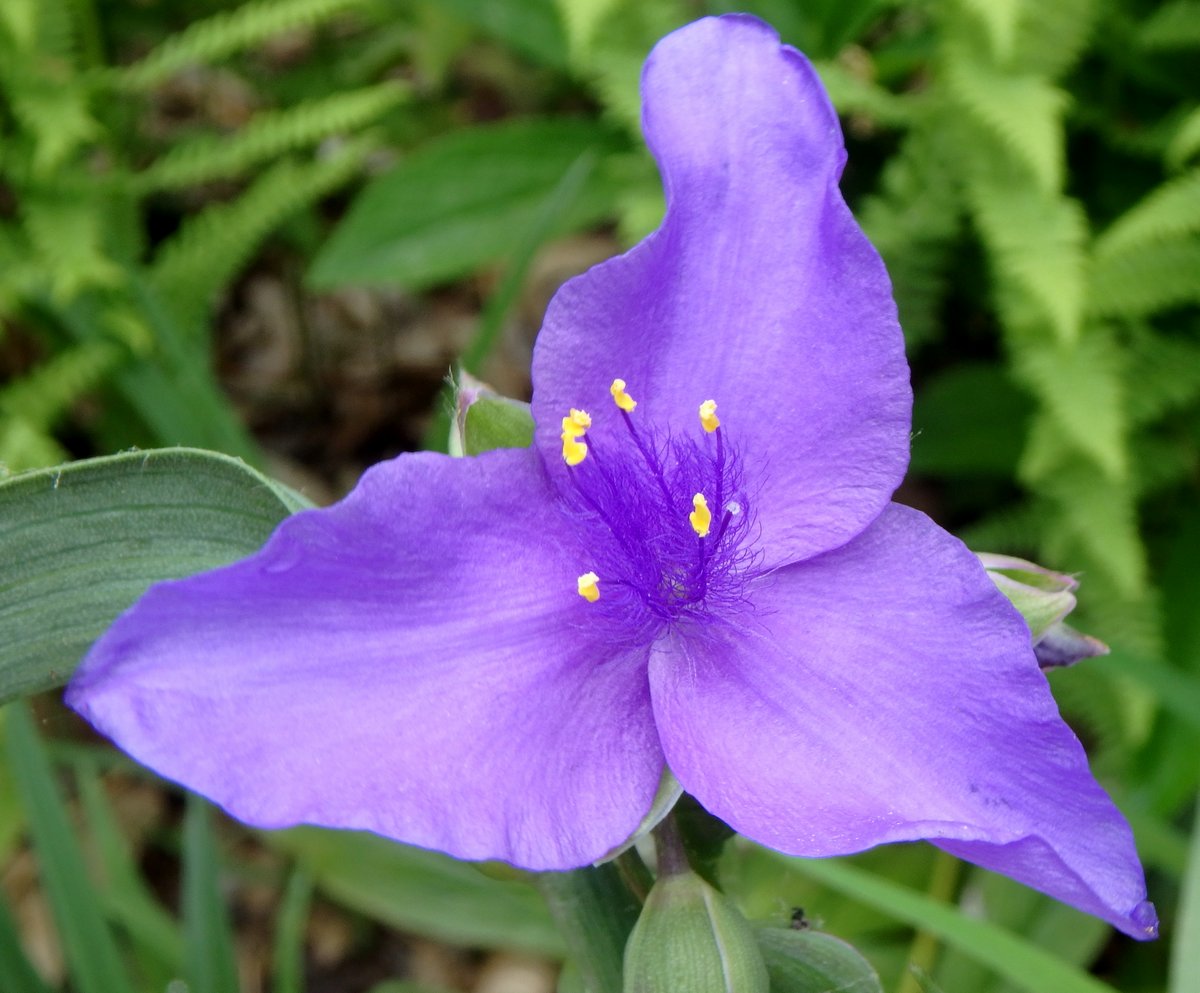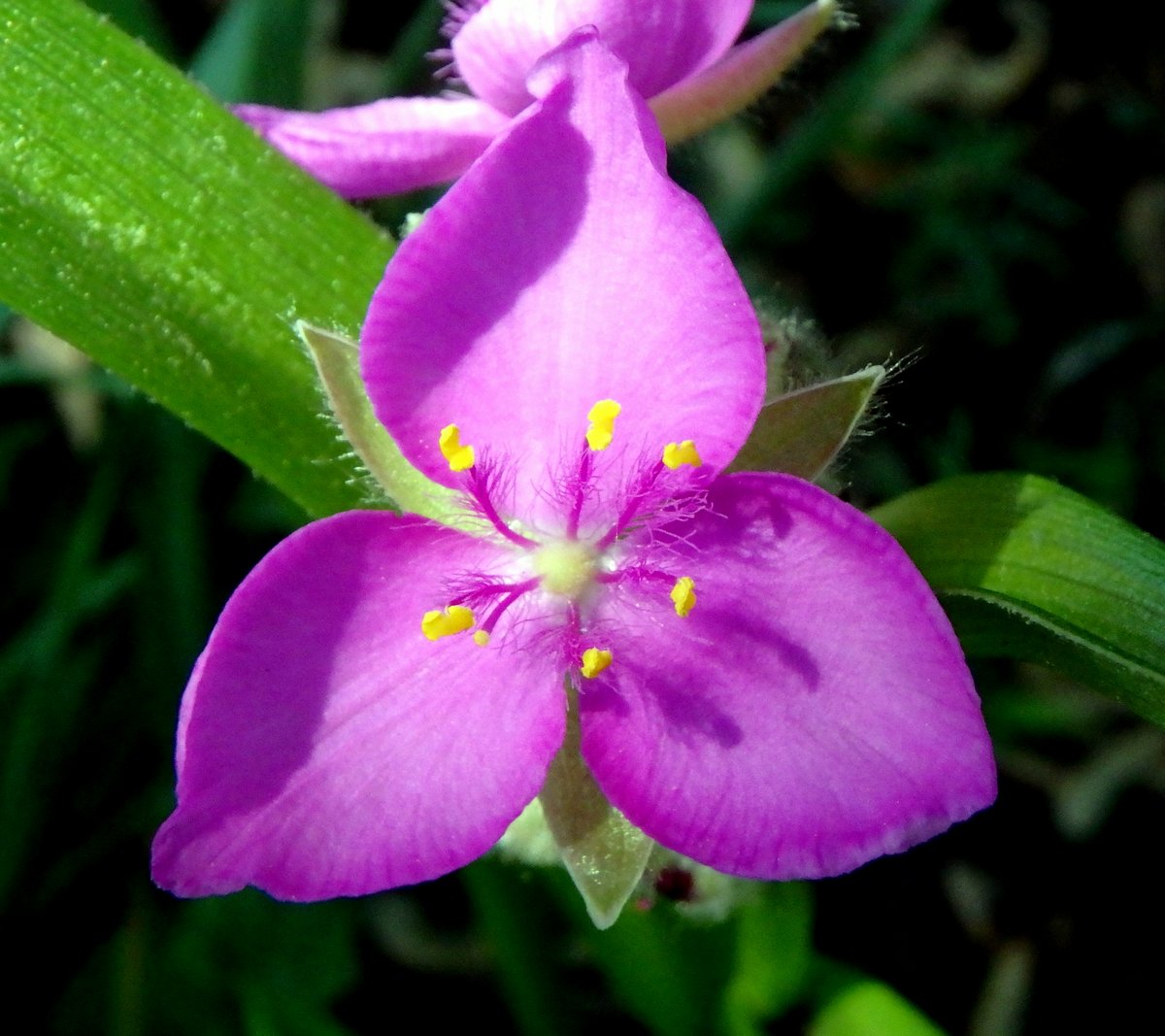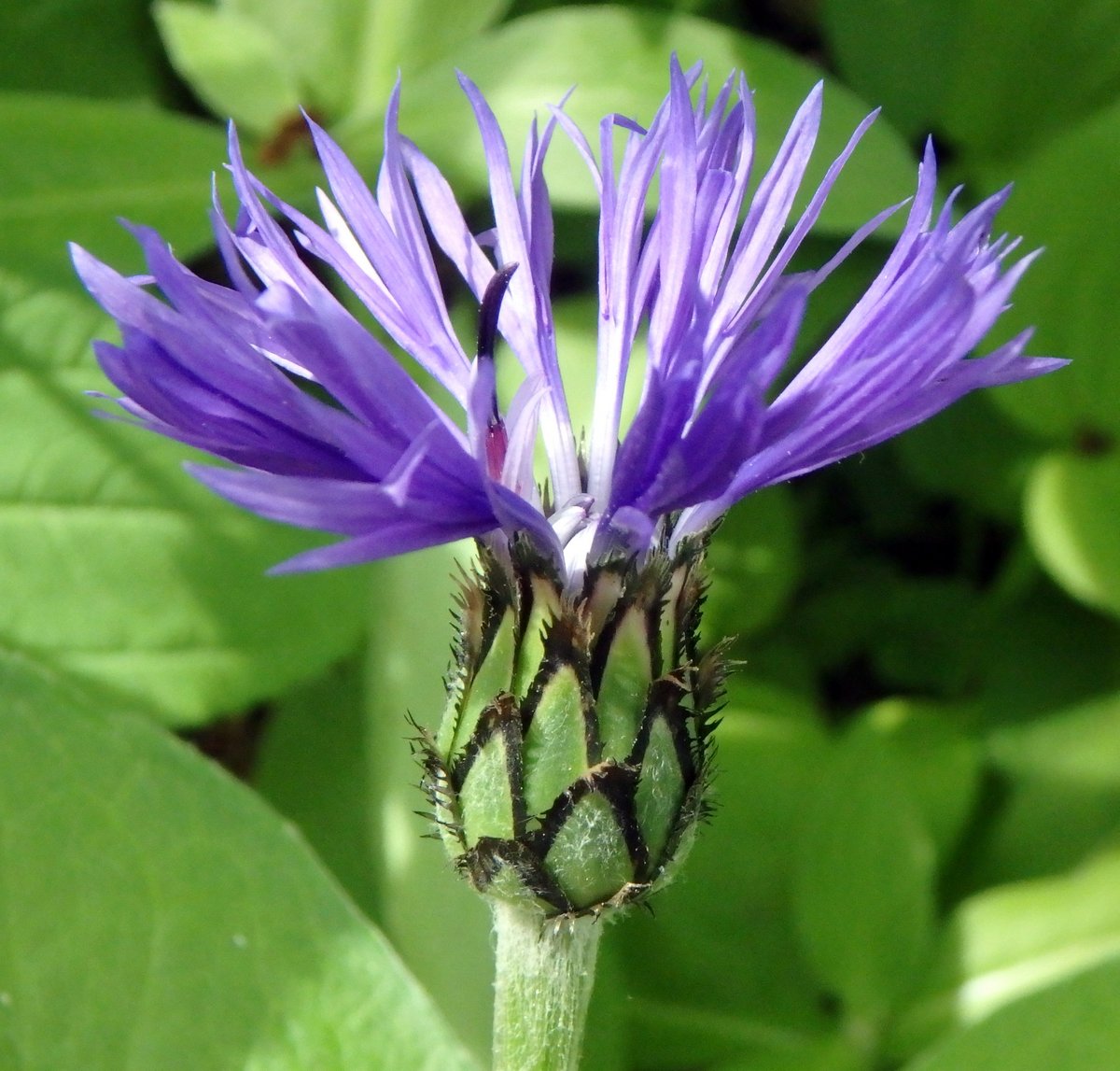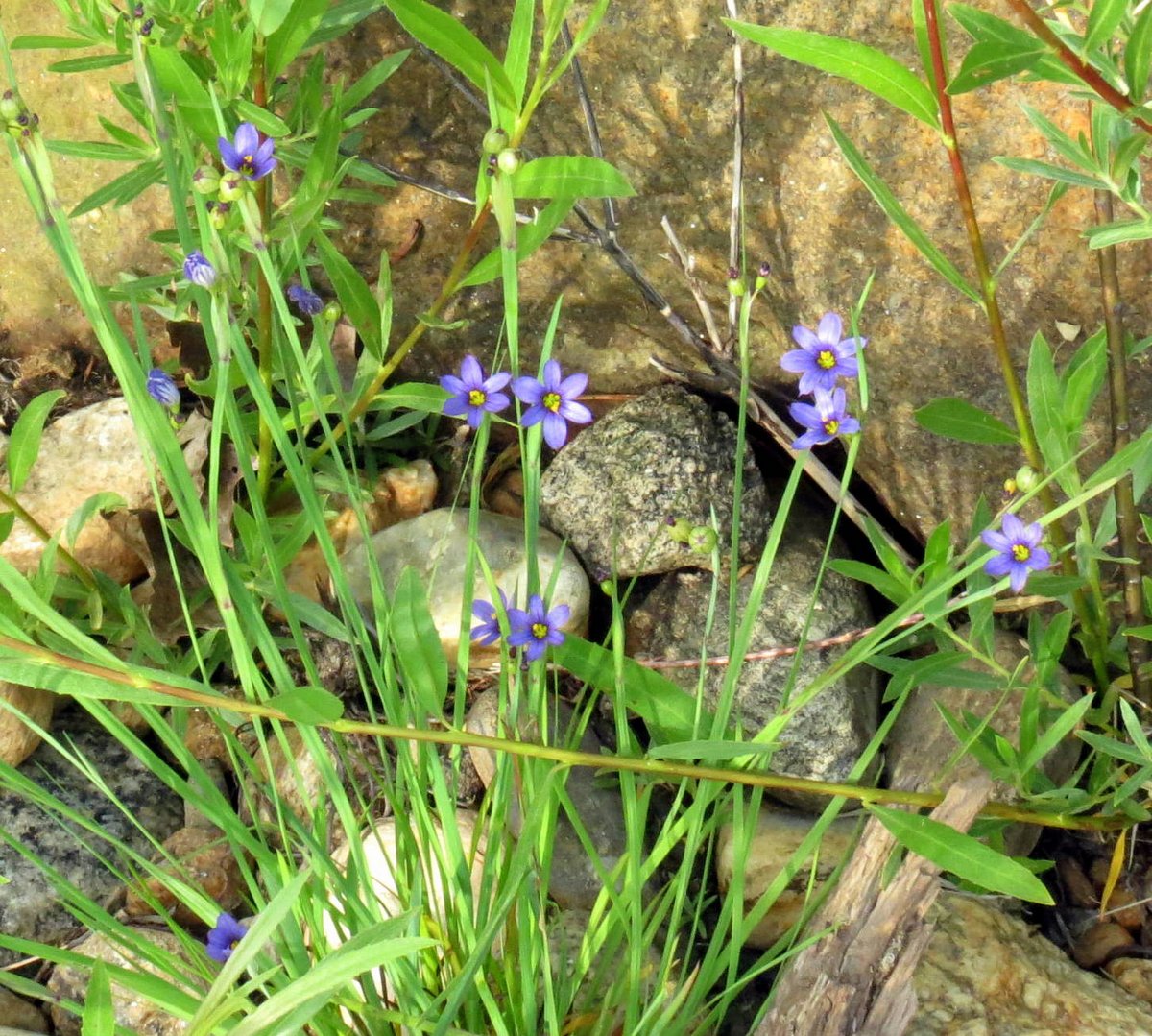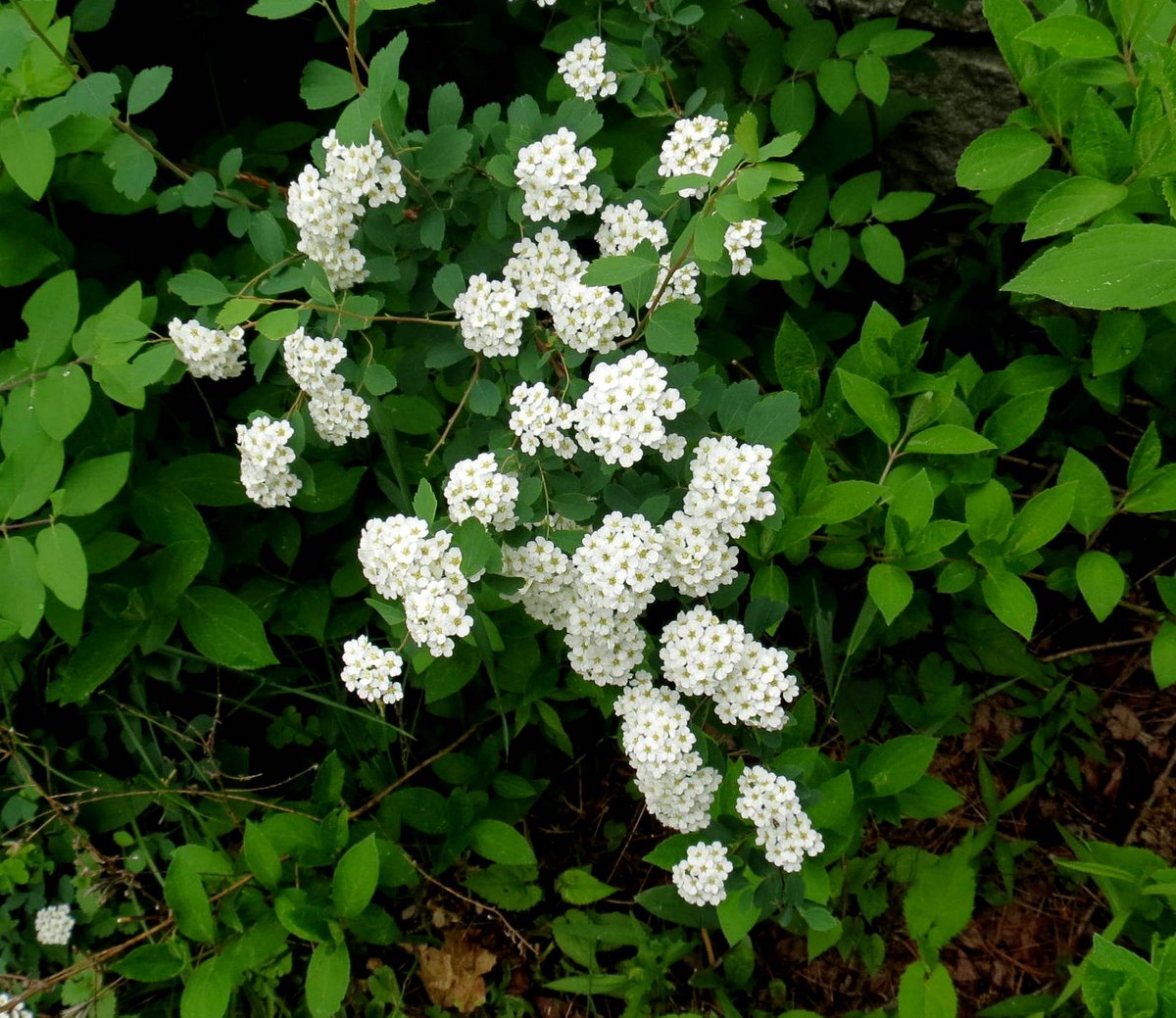
Since I started the last flower post with blue flag irises, I thought I’d start this one with yellow flags (Iris pseudacorus.) There is a difference other than the obvious color difference; this one is originally from Europe and is very invasive, while blue flags are native. It was introduced in the mid-1800s as a garden plant but of course it escaped and began to naturalize and was reported near Poughkeepsie, New York in 1868 and in Concord, Massachusetts in 1884. Today it considered highly invasive and its sale and distribution is banned in New Hampshire. As you can see though, it doesn’t care a hoot about being banned and grows in the Ashuelot river in Keene. I’ve seen it take over entire ponds so only time will tell what it does in the river.

Just up the river bank from where the invasive yellow iris grow is a garden bed with more yellow iris in it, but these are not invasive; they were planted. I don’t know for sure but I believe they are a Japanese Iris called “Rising sun.” (Iris ensata v. Rising sun.) You can see how the petals have pointed ends, rather than the rounded petals on the yellow flags. It’s a beautiful thing.

You might not think that forget me nots would be water lovers but the largest colony of forget me nots I’ve ever seen was growing on a river bank that flooded regularly. This small clump also grew on the riverbank, maybe a foot from the yellow flags. It might become a large colony one day.

Last year a machine came along and cut the one bristly locust (Robinia hispida) plant that I knew of that grew along a rail trail, but when I went back this year there had to have been a dozen of them. I believe new shoots grew from the roots of the original plant, which is a habit that locusts seem to have. In any event I was happy to see them because the flowers are beautiful. Bristly locust is more shrub than tree, though it can reach 8 feet. What sets this locust apart from others are the bristly purple-brown hairs that cover its stems. Even its seedpods are covered by hairs.

A close look at a bristly locust shows that it is in the pea family. It is native to the southeastern United States but has spread to all but 7 of the lower 48 states, with a lot of help from nurseries selling it for ornamental use. The beautiful pinkish purple bristly locust flowers are very fragrant and bees really love them. Every time I’ve see it in bloom it is absolutely covered with bees but this year there were just a few buzzing around.

Fawn’s breath I think is a great name for a flower, and it has just come into bloom. The flowers dance at the end of long, slim stems in the slightest breeze, as in the breath of a fawn. It is also called bowman’s root (Gillenia trifoliata) but though I search each year for the origin of that name I’ve never been able to find it. I like the asymmetrical appearance of the flowers. They look as if a chubby fingered toddler had glued them on. This is a native plant that really should be used more than it is, in my opinion. I know of just one place where it grows.

Ox-eye daisy blossoms (Leucanthemum vulgare) appear in June and very rarely before then, in my experience. It’s another European native that escaped gardens and is now found in meadows in every state in the U.S. including Alaska and Hawaii. A vigorous plant can produce up to 26,000 seeds. In tests 82% of those seeds remain viable even after being buried for 6 years, so don’t look for this one on the endangered list any time soon. I see them everywhere and I’m happy that I do.

The highway department planted the daisy in the previous photo alongside a highway in town, and when they did, they also planted lupines. The daisies thrived but the lupines did not, and now there are only five or six plants left. The flowers in this photo may be the last I see in this spot but thankfully I do see them in other places.

I saw more single flowered pink roses but these had a white eye. I believe they are another rugosa, the old standby, and just about the toughest rose known.

I saw a white allium but the Olympus macro camera saw it differently.

I’ve heard that pretty maiden pink flowers (Dianthus deltoids) get their common name from the way the petals look like they were edged with pinking shears, but did pinking shears exist when they were named? This plant is a European native that has escaped gardens and can be found in lawns and meadows in many states in the U.S. A very similar plant is the Deptford Pink (Dianthus armeria) but its flowers have much narrower petals and it blooms a bit later.

What I think might be cow vetch (Vicia cracca) is a native of Europe and Asia that loves it here and has spread far and wide. According to the Invasive Plant Atlas of the United States the vining plant is present in every U.S. state. Cow vetch can have a taproot nearly a foot long and drops large numbers of seeds, so it is hard to eradicate. It is very similar to hairy vetch, but that plant has hairy stems. I like its color and I think it’s pretty. I enjoy seeing it sprinkled here and there among the tall grasses.

Arrow wood viburnums (Viburnum dentatum) have come into bloom. These shrubs get large, often growing to 6-8 feet tall and 10 feet wide at the edge of the forest, but each individual flower is hardly bigger than a pencil eraser. An easy way to identify viburnums is to look for the five petals (or lobes) that they all have. Native dogwoods, which should be blooming any time now, will always have 4 petals. The glossy, toothed leaves are a good indication that this plant is an arrow wood viburnum. The name “arrow wood” comes from just what you would expect; the straight, hard wood is excellent for making arrow shafts. The white flowers are followed by small, dark blue fruit that birds love.

Maple leaf viburnums (Viburnum acerifolium) have also started blooming. They and most of all the other viburnums are valuable plants to wildlife. Many songbirds eat the berries and beavers, rabbits, deer and moose eat the bark, twigs and leaves. What I like most about this plant is the way its leaves change colors in the fall. They can go from deep maroon to orange red to light, pastel pink and can be mottled with several different colors at once. Note how different they are from the viburnum dentatum leaves we saw in the previous photo. But also notice how alike the flowers are.

Clematis have also just started blooming. Unfortunately I don’t see many of these beautiful flowering vines.

Dutchman’s pipe vine (Aristolochia durior) has just started blooming but you have to search for the flowers under the very large, heart shaped leaves. The vine has historically been used as a privacy screen or for shade on porches and arbors. You can still see it used that way today, but most don’t see these small flowers. They’re mottled yellowish-green and brownish purple with a long yellow tube, and are visited by the pipevine swallowtail butterfly, and other insects.

But I think an insect would need a very long tongue to get in there. The heavily pebbled, rough surface must be to help insects hang on, I would guess. Dutchman’s pipe is native to some south eastern hardwood forests and has been cultivated in other parts of the country and Canada since the 1700s. All it needs is something strong to climb on. I would definitely not fertilize it, because once it gets going it grows fast.

I find goat’s beard (Tragopogon pratensis) growing in a meadow in full sun. This is an oddly behaving flower that closes up shop at around noon and for this reason some call it “Jack-go-to-bed-at-noon.” I remembered to go and see them at around 11:30 am, and many had already hung out their do not disturb signs. Why the one in the photo was still wide open, I don’t know. Another name for goat’s bead is meadow salsify and its spring buds are said to be good in salads, but since a kind of bubble gum can be made from the plant’s latex sap you may find your salad is a bit chewy. It is a biennial, which means it grows a low basal rosette of leaves the first year and then flowers and dies the second year. It is native to Europe, Central Asia and Turkey but it could hardly be considered invasive here; I have a hard time finding it. It has a large, fuzzy seed head similar to a dandelion seed head and that’s where the “beard” part of the name comes from.

Yellow hawkweed (Hieracium caespitosum) is blooming better than I’ve ever seen it this year and I’m seeing large clumps like this one wherever I go. They should bloom right into October.

There was a time when I hated having to deal with red clover but I once was blind, and now I see.

I found a small group of blue toadflax (Nuttallanthus canadensis) and every plant was covered with insect webs. They looked more like a spider mite than a spider web. I almost always find blue toadflax growing in hot sandy waste areas and along roadsides but I’ve even found it on mountain tops and in woodland clearings. It will bloom all summer, right up until a killing frost.

Common speedwell (Veronica officinalis) is blooming better than I’ve ever seen it. This creeping “weed” is a European native that is very common here in lawns, pastures and along roadsides, which is where I found the one in the photo. It has been used medicinally for centuries in cough medicine and its leaves have also been used as a tea substitute. In France they call it “Europe tea.”

The flowers are tiny, fused into a tube with the lower petal (lobe) smaller than the others as is common in all speedwells. They grow in a spike (raceme) and can be white, blue or purple with darker stripes. They are about 1/4 inch across and have 2 stamens and a single pistil. They’re very pretty little things and masses of flowers like I’m seeing this year can put on quite a show.

In this area fragrant white waterlilies (Nymphaea odorata) start to bloom in June, and I know of a pond near a highway that has many hundreds of them in it. I’ve noticed over the last two or three years that more and more people are showing up there when they come into bloom. Some just walk slowly, some fish, some take photos and some just sit. With a busy highway so near you couldn’t really call it a tranquil spot but still they come, and several of them have become regulars now, I’ve noticed. It’s always nice to see more people getting outside and I wouldn’t wonder that they’d come out to see such a beautiful thing.

I’ve seen great blue herons, geese, ducks, all kinds of songbirds, and even a mink here. I know there are beavers here too, though I’ve never seen one. The naked flower stalks with all the flowers and leaves gone tell me there is also a woodchuck living here and I always hope to see it. Of course I also come to see the waterlilies, and I always look for that one might be tilted just right so I can see the beautiful golden flames that burn in its center. I can’t say why the others come but I come for the beauty of the place and I always find it, in all seasons.
That pleasure which is at once the most pure, the most elevating and the most intense is derived, I maintain, from the contemplation of the beautiful. ~Edgar Allan Poe
Thanks for coming by.
















































































































